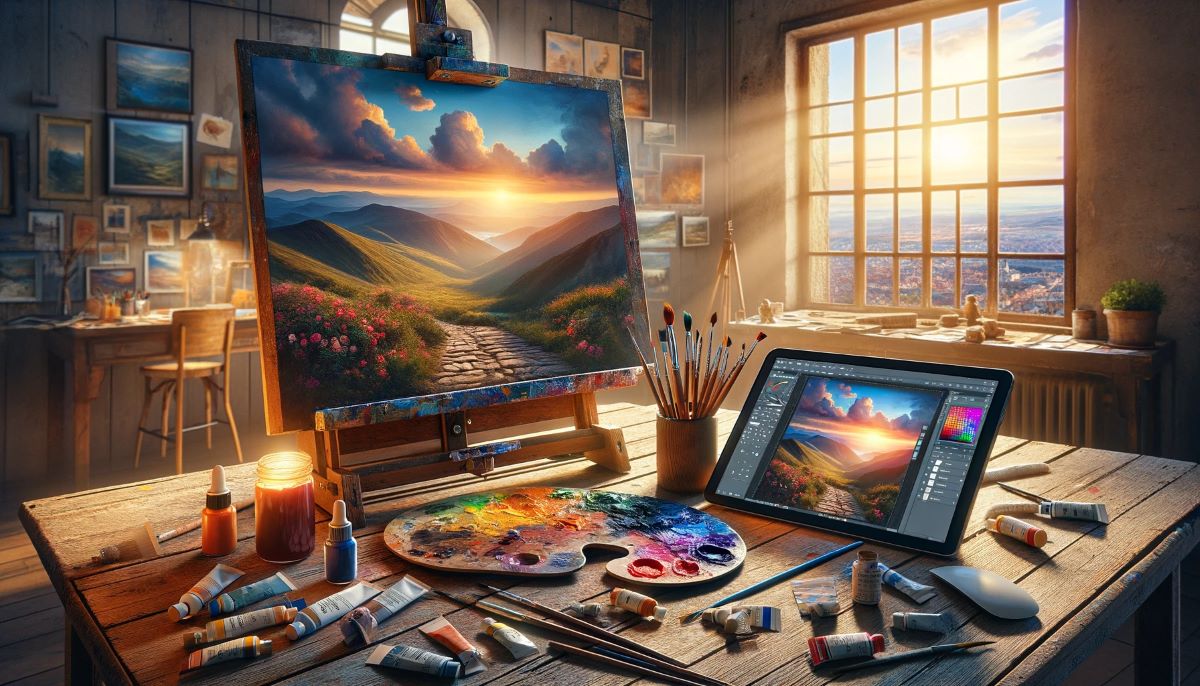Exploring the "Painting Source": From Inspiration to Technique
By red
Published January 29, 2024
 Exploring the "Painting Source": From Inspiration to Technique
Exploring the "Painting Source": From Inspiration to Technique
In the world of art, the term "Painting Source" refers to the myriad elements that converge to inspire and shape the creation of a painting. This concept extends beyond the physical mediums used by artists, encompassing a wide range of factors including personal experiences, cultural influences, and even advancements in technology such as background removers and image upscalers. This article aims to provide a comprehensive overview of these diverse aspects and how they contribute to the art of painting.
Physical Sources: Materials, Techniques, and Technological Aids
At its core, a painting source involves tangible materials like paints, canvases, brushes, and the artist's chosen environment. The selection of oil, acrylic, or watercolor paints, for instance, can drastically alter the painting's appearance and texture. Moreover, contemporary artists are increasingly incorporating technology into their creative process. Tools like the background remover can aid in visualizing compositions more clearly, while the image upscaler can be used to enhance the resolution and detail of preliminary sketches or digital elements before they are transposed onto canvas.
Inspirational Sources: Beyond the Canvas
Inspiration forms the soul of a painting's source. This can stem from various origins:
- Nature and Environment: The environment an artist inhabits often serves as a direct source of inspiration. The colors of the sky, the forms of landscapes, and the intricate details in nature are frequently depicted in art.
- Emotions and Personal Experiences: An artist's personal journey, emotions, and experiences are deeply embedded in their work. These elements provide a unique and intimate dimension to the painting, allowing viewers to connect on a more personal level.
- Cultural and Historical Influences: The cultural backdrop and historical era of an artist play a significant role in shaping their work. Art movements, societal changes, and historical events can all be reflected in the themes and styles of paintings.
- Literature and Mythology: Many artists draw upon literature, myths, and folklore for inspiration. These stories offer a rich repository of themes, symbols, and imagery, enabling artists to weave narrative depth into their visual creations.
Conclusion
The concept of a "Painting Source" is an intricate amalgamation of the physical, emotional, cultural, and technological elements that fuel the creative process of painting. Recognizing these diverse influences not only deepens our understanding of the artistic process but also enhances our appreciation for the artwork itself. Each painting emerges as a unique entity, a testament to the artist's skill, vision, and the varied sources that inspired its creation. The sophisticated integration of techniques, including the ability to remove background and upscale image, further exemplifies this dynamic interplay, endowing each artwork with a unique essence and timeless charm.